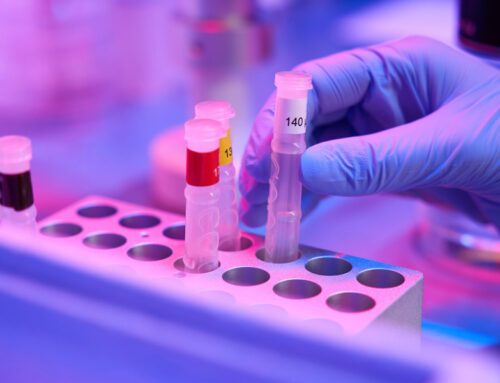Having a new baby can be a delightful experience. However, challenges that come alongside a new baby are real and sometimes unexpected. There are many challenging changes that women can experience both physically and mentally after giving birth, and one of them is mastitis caused by a clogged milk duct.
Experiencing mastitis can be stressful and sometimes seem like a never-ending situation. You don’t have to experience that if you have proper guidance and care. Our goal at Trogolo Obstetrics and Gynecology is to help and educate women. We will help you overcome the challenges of mastitis by talking more about mastitis symptoms and how to prevent mastitis.
What Is Mastitis?
Mastitis is a type of benign breast disease that develops in breast tissue. It is an infection caused by a clogged milk duct, and it can cause unbearable pain. Most commonly, only one breast is affected, and it’s often swollen and red, but there are also many other mastitis symptoms.
Who Can Get Mastitis?
Mastitis can occur even in men and women that aren’t breastfeeding, but it happens rarely. Usually, it happens to women during the first six to twelve weeks of breastfeeding.
Women that are more likely to suffer from mastitis have:
- Diabetes or other autoimmune diseases.
- Eczema or similar skin condition.
- Tobacco or nicotine addiction.
- Breast implants.
- Nipple piercing.
Types of Mastitis
There are two different types of mastitis:
Lactation: It is the most common type of mastitis that affects breastfeeding women. This type is also called puerperal mastitis.
Periductal: A rare type that happens to menopausal and postmenopausal women. It can also happen to women that are not in menopause but are smokers. This type is also called mammary duct ectasia. It occurs because milk ducts thicken, and it results in an inverted nipple producing a milky discharge.
What Causes Mastitis?
Sometimes mastitis occurs when bacteria on the skin or saliva enters breast tissue through a milk duct or crack in the skin.
A common cause of mastitis is a clogged duct that prevents milk from flowing normally or even problematic breastfeeding techniques. It happens because stagnant milk in the clogged milk duct is a perfect environment for bacteria to grow.
Various other circumstances can increase the risk of developing mastitis for breastfeeding women:
- Using only one position to breastfeed.
- Improper latching techniques.
- Wearing tight-fitting bras that don’t allow a normal milk flow.
- Cracked or sore nipples.
Possible Mastitis Symptoms

Because mastitis often affects only one breast, a common symptom is a swollen and hot to feel breast and even tender to touch.
Some other symptoms that can occur alongside are:
- Breast pain
- An unpleasant burning sensation that gets worse when you breastfeed
- Fatigue
- Breast lumps
- Headaches
- Nipple discharge
- Fever and chills, similar to flu symptoms
- Nausea and vomiting
How Is Mastitis Diagnosed?
If you are experiencing similar symptoms that we mentioned, you probably have mastitis. However, some signs of mastitis are similar or even the same as symptoms of other breast-related diseases, so you must schedule an appointment with your healthcare provider.
If you are breastfeeding, your doctor will do a physical exam and check your symptoms, alongside checking your medical history. If you are not a mother that’s breastfeeding, but you have similar symptoms, you may have to do some other tests, like a mammogram, to rule out breast cancer and any other breast disease.
Is It Possible to Get Mastitis More Than Once?
Unfortunately, it is possible to get clogged duct and mastitis more than once. Because of that, the first time you get it, you should follow the treatment correctly and prevent future clogged ducts and mastitis.
If you often have problems with clogged ducts, it could be that the issue is with how the baby is positioned during nursing. In that case, it’s best to consult with a breastfeeding specialist for some helpful advice.
How Is Mastitis Treated?
Mastitis isn’t difficult to treat; it only requires taking oral antibiotics prescribed by your healthcare provider, and within ten days, the infection should clear up. That’s not always the case, and sometimes mastitis can last for up to three weeks.
Sometimes if the symptoms are not severe, mastitis can go away even without medical treatment. However, we strongly advise you always to seek professional medical care if you notice any symptoms of mastitis.
Due to the painful and unpleasant symptoms, there are some things you could do to reduce the pain and inflammation, like:
- Drink a lot of fluids.
- Rest as much as you can.
- Wear a supportive bra that’s not too tight.
- Breastfeed every two hours, or more often if it’s possible. If it is not, you should use a breast pump to promote milk flowing through the ducts.
- Take warm showers, and apply warm, moist compresses to the inflamed breast.
- Massage the affected breast using a gentle circular motion.
Is It Safe to Continue Breastfeeding During a Treatment of Mastitis?
If you are scared that you will carry over the infection to your baby through breast milk, you don’t have to worry. It can’t happen, so you shouldn’t stop breastfeeding while you’re on therapy for mastitis. If you are worried about the antibiotics you’re using, they are also safe for the baby.
Even if it’s uncomfortable, breastfeeding during mastitis can help you a lot by moving milk through the clogged milk ducts.
How to Prevent Mastitis

Prevention is crucial, especially if you previously had mastitis. It’s not difficult to learn how to prevent mastitis. There are a few simple steps that you can take to lower the risk of getting clogged duct and mastitis:
- Don’t wear tight-fitting bras that will keep your nipples moist.
- Nurse your baby on one side, and allow the breast to empty before switching to the other side.
- Don’t breastfeed in only one position.
- Use your finger to break the baby’s suction on the nipple when you want to stop the feeding.
- Air out your nipples every time after nursing.
What Happens to Untreated Mastitis?
We’ve mentioned that sometimes untreated mastitis can go away all by itself, but that’s rare. More often, if left untreated, it can lead to a breast abscess that requires surgical drainage.
You might have heard that untreated mastitis can increase your risk of breast cancer, but that’s not true. However, you should know that the symptoms of mastitis are similar to inflammatory breast cancer. It’s vital to contact your healthcare provider as soon as you start experiencing mastitis symptoms to rule out inflammatory breast cancer.
Feel Free to Contact Us if You Need Help
Mastitis is an uncomfortable condition that can make you feel agitated, lost, and like you don’t have whom to turn to in these painful moments. If you feel like that, you shouldn’t suffer waiting any longer. Trogolo Obstetrics and Gynecology is dedicated to helping the women of Jacksonville, Florida. If you need advice considering mastitis or experiencing some symptoms, feel free to contact us and book an appointment with us. Trogolo OBGYN is here to give you the best possible care you deserve and to support you in your recovery.





